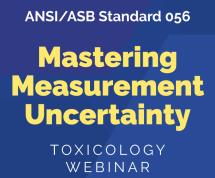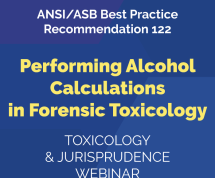Search
Explore content from JFS, ASB, the AAFS Newsfeed, and other content using the search bar or filters.
Technical Report on the Articulation of the Reasoning and Foundational Principles Behind...

Standard for Training and Certification of Canine Detection of Human Remains: Human...


Standard for the Technical Review of Bloodstain Pattern Analysis Reporting

Forensic Toxicology: Terms and Definitions

Terminology for a Suspected Pattern of Dental Origin

President's Spotlight—Back to Basics

FSF Emerging Forensic Scientist Award Recipients Announced
FSF Warren-Young Scholarship—May 1, 2025 Deadline
Epic Deals for Members—April 21
In Memoriam: Sakhr Jaber AlQahtani
Forensic Nursing Science Section: 2026 Presentation Information
ABC Seeking Subject Matter Experts
Optimizing amplification threshold of low template DNA
Forensic DNA laboratories often face challenges in processing low template DNA samples efficiently. This study aimed to optimize the criteria for amplifying low‐quantity samples by considering DNA concentration, degradation factor, and biological sample type. We analyzed 155 real...
Inter‐laboratory variation in interpretations, comparisons, and statistical analyses of...
DNAmix2021 was a large‐scale inter‐laboratory study conducted to assess variation in interpretations, comparisons, and statistical analyses of DNA mixtures. Analyses were based on 765 responses by 106 participants from 52 labs. Eight distinct DNA mixtures were created, each of wh...
Identification of non‐glandular trichome hairs in cannabis using vision‐based deep...
The detection of cannabis and cannabis‐related products is a critical task for forensic laboratories and law enforcement agencies, given their harmful effects. Forensic laboratories analyze large quantities of plant material annually to identify genuine cannabis and its illicit s...
Of rodents and foxes: Faunal activity and scavenging at carcasses in a Central European ...
Vertebrate activity can significantly affect forensic investigations. Trauma interpretation is impaired when vertebrates scavenge on injuries and inflict damage, and scavengers can hinder the recovery of human remains through dispersal. However, forensic scavenging research is sc...
Forensic Document Examination Terms and Definitions

Mastering Measurement Uncertainty: From Theory to Practical Application
ANSI/ASB Standard 056 | Like any standard, there are a variety of ways to implement based on the laboratories scope. This webinar will discuss several approaches to implementation and provide helpful tools to ease the process.

ANSI/ASB BPR 122 - Best Practice Recommendations for Performing Alcohol Calculations in Forensic Toxicology
This session will review the pharmacokinetic principles of alcohol as they relate to performing calculations in forensic toxicology casework. The recommendations contained within ANSI/ASB BPR 122 will be discussed and examples will be provided of how to apply those to real-world case scenarios.
